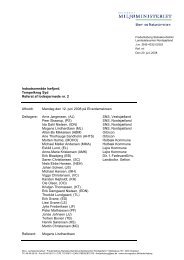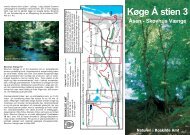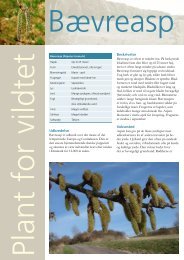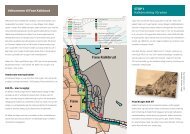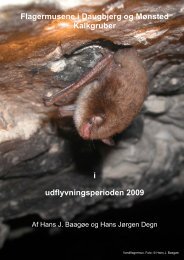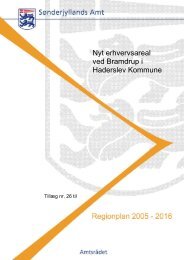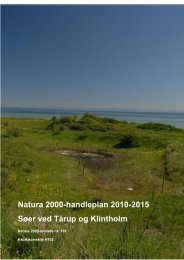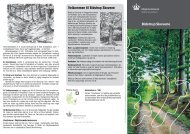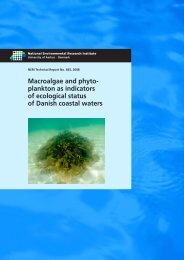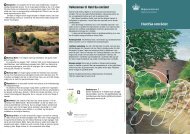Vejledning om strandrensning - Naturstyrelsen
Vejledning om strandrensning - Naturstyrelsen
Vejledning om strandrensning - Naturstyrelsen
You also want an ePaper? Increase the reach of your titles
YUMPU automatically turns print PDFs into web optimized ePapers that Google loves.
Summary<br />
The Danish Environmental Protection Agency has prepared the present updated<br />
guideline for cleaning of oil contaminated beaches and other coastal areas. The<br />
main target group for this guideline is local municipalities holding responsibility<br />
for coastal cleaning in case of oil contamination of coastal areas.<br />
In chapter 2 of the present guideline, the general delegation of responsibility in<br />
case of pollution of the sea, of coasts, beaches and harbours is described. Chapter 3<br />
gives a number of guidelines for municipal contingency plans for remediation of<br />
coasts, beaches and harbours after oil pollution. Chapter 4 describes the rules laid<br />
down concerning distribution of expenses for emergency preparedness and control<br />
measures between the authorities involved.<br />
Chapter 5 gives a short description of s<strong>om</strong>e of the most important oil pollution<br />
incidents during the last 35 years. The chapter exemplifies different cleaning<br />
actions and effects of oil contamination. This will give an insight in the diversity of<br />
oil contamination and illustrate the experiences fr<strong>om</strong> previous oil contamination<br />
e.g. the importance of alert plans.<br />
Chapters 6-13 include descriptions of different beach cleaning methods used for<br />
certain stretches of coast in relation to the stretches’ geologic shape, biological<br />
vulnerability and the size and type of the oil spill etc.<br />
The aim of the guidelines is to point out beach cleaning methods that pay as much<br />
attention as possible to the vulnerability of the different coast types to oil pollution<br />
and the cleaning work.<br />
Previous oil pollution incidents have shown that the character of the pollution and<br />
consequently the most effectual cleaning methods vary fr<strong>om</strong> incident to incident.<br />
As this makes it impossible to draw up detailed guidelines for cleaning work<br />
covering any conceivable oil pollution incident at a stretch of coast, an assessment<br />
must be made for each oil pollution incident stating which cleaning and disposal<br />
methods will be most suitable.<br />
To support this assessment, the physical properties of significance for spreading<br />
and transformation of different oil types on the beach, are reviewed in chapter 6.<br />
This is further detailed in chapter 7, where it is described, how it must be expected<br />
that spilled oil will be degraded and spread after spills at sea. Biological impacts of<br />
oil pollution are outlined in chapter 8. The background for this is that knowledge of<br />
the potential biological harmful effects influences how the cleaning must be<br />
approached, and which coast lines must given priority to protection against the<br />
spilled oil.<br />
The clean up of the different coast types are described in chapter 12. Moreover this<br />
chapter includes a description of how it can be prioritised which coast lines should<br />
be protected first in case of threatening oil pollution and which coast lines should<br />
be given high priority regarding cleaning after an oil pollution has occurred. The<br />
chapter also includes a more detailed review of cleaning methods for different<br />
coast types, and it is described how after-cleaning could be acc<strong>om</strong>plished.



